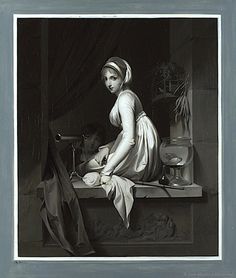In week 4 they have introduced a Dadaist poetic form and how we can make a Dadaist poem. Another form was introduced by them was sonnet.
"Forcing twentieth-century America into a sonnet— gosh, how I hate sonnets—is like putting a crab into a square box. You’ve got to cut off his legs to make him fit. When you get through, you don’t have a crab anymore."
—
Williams Carlos Williams, in an interview
In this week there were two chapter and many poems like, Stein’s “A Long Dress” and “A Carafe,That is a Bind Glass” and John Bishop’s “A Recollection” Tristan Tzara’s “To make a Dadaist poem”.
In my assignment I have compared two versions of a same poem by William Carlos Williams. Here I have shared my assignment of week 4 with reviews,
“Young Woman at a Window” (version 1)
While she sits
There
with tears on
her cheek
her cheek on
her hand
this little child
who robs her
knows nothing of
his theft
but rubs his
nose
In the first stanza, there is not any description of place but there is a description of woman, she has tears on her cheek that is first image and the sudden next image adds more understanding in the first image that the cheek of a woman is on her hand so we can visualize that she is upset and thinking. The next stanza “The little child/who robs her” suggests that the child has taken away her freedom and youth by giving her responsibilities, but the child is very much unknown with that fact that after he came what changes has happened in the life of woman and he is just rubbing his nose innocently. A child always gives happiness to parents but in this poem may be an opposite side of the fact has been presented.
“Young Woman at a Window” (version 2)
She sits with
tears on
her cheek
her cheek on
her hand
the child
in her lap
his nose
pressed
to the glass
The second version is quiet different than the first version. In second version we do not find words like ‘where’ and ‘while’ but the clear image is that “she sits with tear” means she usually sits there and tears are on her cheek, clearly creates an image that she is crying. The second stanza can be seen as a continuation of the description of a woman’s condition that her cheek is on her hand but in the second stanza there is an another line, “her hand/the child” can be visualize that her child is in her hand or her hand in on her child. In the third stanza there is line “in her lap/his nose” which can be seen in two different ways first is that the child is in woman’s lap and second is if we take the third stanza separately like the nose of the child is in lady’s lap as if he his hiding his face in her lap. Same interpretation can be taken in stanza four that with the continuation of stanza three the image is different that the child is pressing his nose on the glass (glass of window), but in a different way we may find that only the glass is pressed, may be the woman has pressed the glass in her pain and sadness because a child cannot press the glass.
Comparison of both versions:
The first poem has clear images but the second version has better images if we observe it with the idea of imagism. The first version gives us limited images while the second version has variety of images and interpretation. In the first version the nose of child id pressed on the window glass as if something beautiful or amazing is there outside of the window, but in the second version there are many interpretations than only this one.
The form of the poetry is quite unique because it follows repetition like, “her cheek/her cheek on/her hand” and word arrangement is quiet different so that many images can be visualize.
Here I have shared the reviews of classmates (learners):


No comments:
Post a Comment